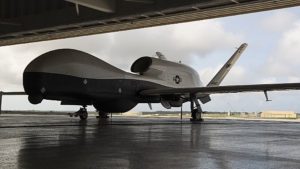
The first two MQ-4C Triton unmanned aircraft arrived in Guam for the first deployment of the aircraft in the Pacific theater. The first Triton unmanned aircraft systems (UAS) squadron, Unmanned Patrol Squadron (VUP) 19, will operate the first two aircraft as the early operational capability (EOC). The EOC group aims to further develop concept of operations and fleet learning for operating a long-endurance, high altitude unmanned maritime aircraft. The two Tritons arrived at Andersen Air Force Base on Jan. 26…

 By
By 











